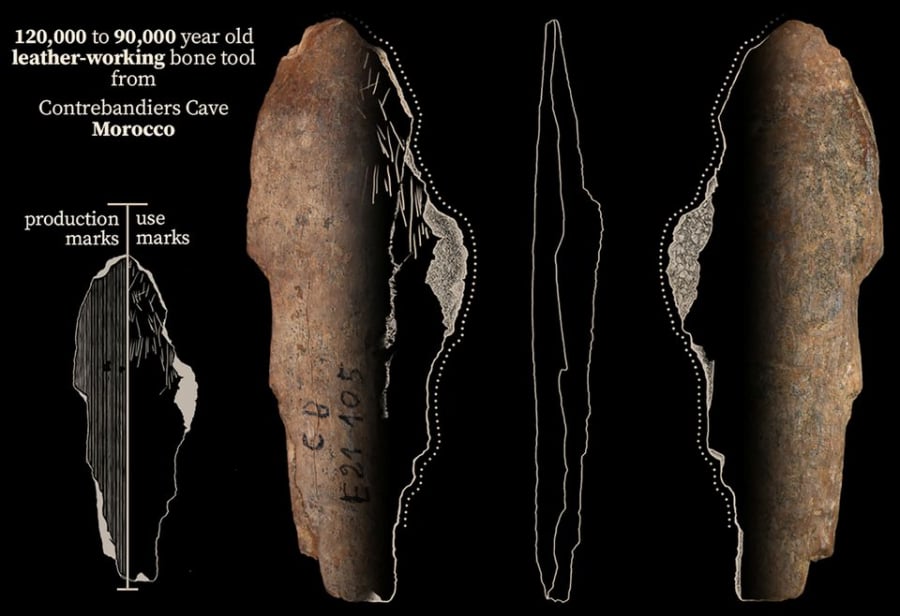The research, led by Arizona State University paleoanthropologist Curtis Marean and Dr. Emily Hallett, uncovered 62 tools made from the bones of small carnivores such as foxes, jackals, and lynx, and from the teeth of cetaceans (whales, dolphins, and porpoises). The findings, unearthed from Contrebandiers Cave in Moroccan, are the earliest evidence of clothing in the archaeological record, and also demonstrate the emergence of complex culture and tool production in Africa.
Although the purpose of many of the tools remains unknown, the team found large, round objects shaped from animal bones.

Excavation from Contrebandiers Cave (Moroccan). Photo: Internet

Archaeological finds in the Moroccan cave of Contrebandiers show that small carnivores were skinned by humans for their feathers and bones to make tools. Illustration: Jacopo Niccolò Cerasoni
“These spoon-shaped tools are well suited to scraping, and then removing connective tissue from the skin during shaving and hair removal because they cannot penetrate the skin at all,” the researchers write.
Dr Emily Hallett said the work reinforced the view that early humans in Africa were highly creative and resourceful. She added: “Our research adds to the list of earliest human behaviours in the archaeological record from Africa, around 100,000 years ago.”
Although skin and fur are unlikely to survive in sediments for hundreds or thousands of years, previous DNA-based studies have shown that clothing may have appeared as early as 170,000 years ago and was anatomically worn by modern humans in Africa.

Cut marks on the bones of sand foxes, jackals and lynxes are clues to fur removal. Illustration: Jacopo Niccolò Cerasoni
Hallet said she began studying animal bones in 2012 because she was interested in early human diets and wanted to find out if any changes in diet were linked to changes in stoneworking technology.
Exactly how the costumes were created remains a mystery, with researchers wondering whether they were used as protection against the elements or had a more symbolic purpose.
Hallet added that she believes European Neanderthals and related hominins made clothing from animal skins long ago, especially when they lived in temperate and cold environments. “Clothing and other early human toolkits may be part of the reason for the success of human adaptations everywhere, even in harsh climates.”
In the future, Hallett hopes to collaborate with other researchers to identify skin-shedding patterns and synthesize them to better understand the origins and extent of this activity.

 VI
VI EN
EN





























